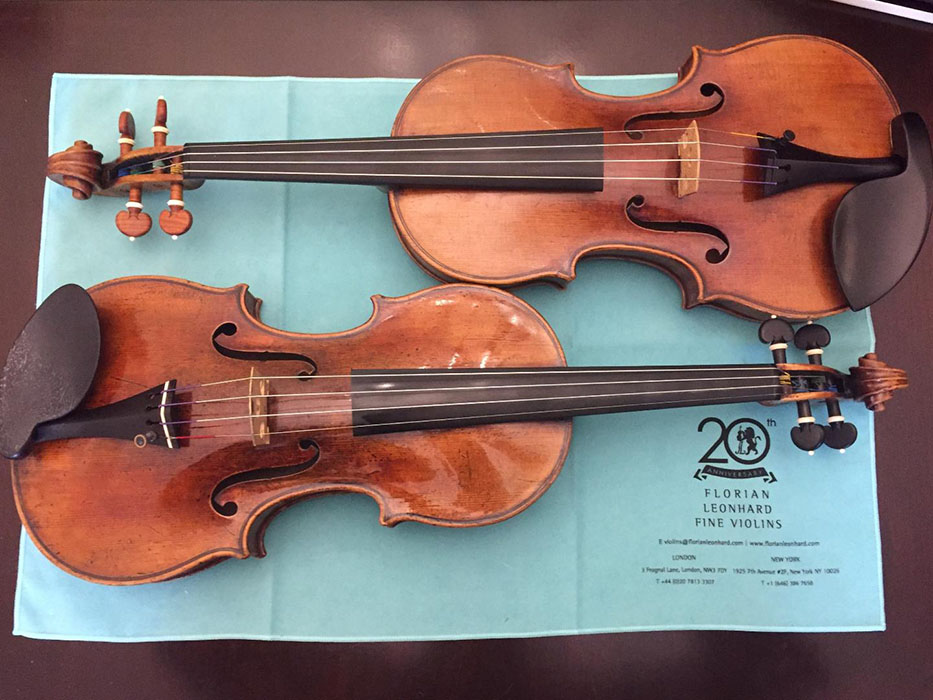Conductor: Aram Demirjian
Schnittke: Moz-Art à la Haydn
Golijov: Last Round (Muertes Del Angel)
Bach: Concerto For 2 Violins (Soloists William Shaub and Edward Pulgar)
Jessie Montgomery: Starburst
Shostakovich: Chamber Symphony
Over the years, the stated intention of the Knoxville Symphony Orchestra’s Chamber Classics concerts was to offer music that lends itself to performance by smaller ensembles. Indirectly, this also meant that music selections for the series would generally stand apart from works requiring full orchestras and, by default, explore a vast territory of less familiar works along with the classics. Along the way—and perhaps unintentionally—the Sunday afternoon series began to develop a true following both among knowledgable listeners and those who just love a musical adventure. This Sunday’s KSO Chamber Classics series checks off both boxes.
The centerpiece of the concert will be a performance of Johann Sebastian Bach’s splendid Concerto for Two Violins, Strings, and Continuo in D minor, BWV 1043, featuring soloists from the orchestra: Concertmaster William Shaub and Principal Second Violin Edward Pulgar. However, what sets this performance apart is that the soloists will be performing on two violins constructed in the 1690s by Antonio Stradivari. This arrangement secured by Shaub comes about courtesy of Florian Leonhard Fine Violins and its New York City shop’s managing director, Jonathan Solars.
Today, these Stradivarius instruments are over 300 years old. But, at the time of Bach’s composition of the Double Concerto, sometime between 1717 and 1723 during his time as Capellmeister at the court of Anhalt-Cöthen, the violins were maybe 30 years old and would have been played regularly. So, not only are they truly period instruments to the Bach concerto, their sonic qualities offer listeners a unique musical adventure in the acoustics of the Bijou Theatre.

“Edward and I went to New York City together to pick up these violins,” Shaub explains.” We actually played lots of violins in the shop, and we were able to settle on two. But, we were most excited to get back and enjoy them with the section. We operate as a family anyway, but we really wanted to bring these Strads so that everyone could experience it and get an idea of the sound. In that sense, we all develop together.”
“My experience with them so far has been pretty remarkable,” says Shaub, “because the sound is so exquisite. The violin, it projects so well, not just across the stage, but also out into the audience. But it doesn’t necessarily project that way in the player’s ear—it doesn’t have a huge sound in your ear. That is the mystery, that is the brilliance of these old violins.”
Shaub believes that the mystery and attraction that the sonic qualities of Stradivarius instruments have on violinists cannot be overstated.
“That is the mystery,” admits Shaub. “How do you combine soft, sensitive elegance with projecting power. That’s why all the great soloists, who could have anything, choose these violins. What violinists seek is the blend that other violins don’t have…It’s been energizing this week in rehearsals to have these instruments in the section—and that goes for the whole string section, not just the violins.”
The true test, of course, comes when the violins meet J.S. Bach.
“The second movement of the concerto (Largo ma non tanto) is an great example of Bach’s melodious writing that we do not always see from him, even though it is a canon. But, it sounds like two singers, it’s so vocally inspired. I think it is going to be a great way to showcase these Stradivarius instruments. It highlights their strength, which is cantabile playing.”
While the obvious focus of Sunday’s concert will be on Bach and the violins, the other works on the concert represent the gamut of musical diversity and challenge. Concluding the concert will be Shostakovich’s Chamber Symphony from 1960, a string chamber orchestra version (arranged by Rudolph Barshai) of the composer’s String Quartet No. 8 in C minor, Op. 110. A debate rages over Shostakovich’s intention with the work and its influences—whether a Soviet composer’s attack on fascism, a disguised statement against the Soviet machine, or a questionable biographical implication.
Getting to know Russian composer Alfred Schnittke is definitely a musical adventure; Maestro Aram Demirjian will handle the introductions with Schnittke’s 1977 work Moz-Art à la Haydn, scored for two violin soloists and a small string ensemble. The work can properly be called a pastiche, for it draws on humorous parody, including an unfinished Mozart fragment, Music to a Carnival Pantomime, concluding with a reference to Haydn’s “Farewell” Symphony.
As if Bach, Shostakovich, and Schnittke did not offer enough variety in stylistic nirvana for Sunday’s listeners, Demirjian has also programmed Osvaldo Golijov’s Last Round and a 2012 work by Jessie Montgomery, Starburst.







